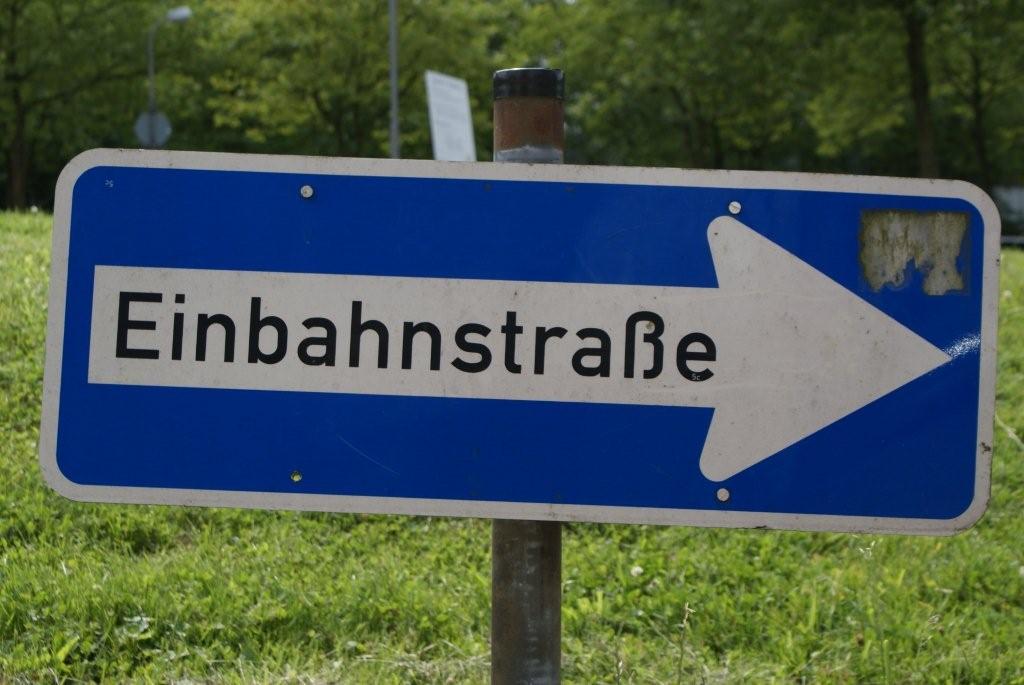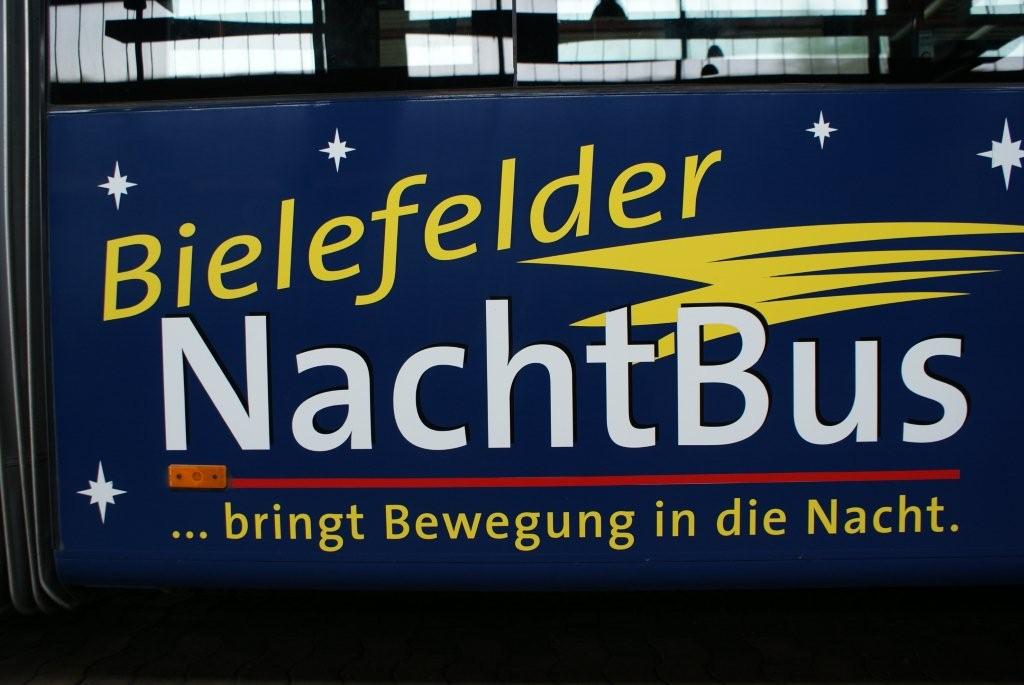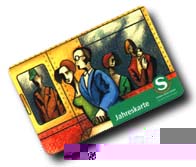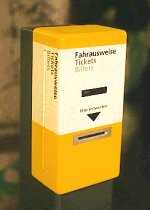6.10 Getting around town
 Germany has a very comprehensive system of public transport, the reliability and cleanliness of which often put the British system in the shade. The best thing to do on arriving in a town or city is to get hold of a town plan (der Stadtplan). This will include a map showing the rail, tram, bus and underground connections. An overview of bus routes and a bus and rail time-table can be obtained from the ticket kiosks located at major stops in the town centres. For the fullest picture, you should head for the local tourist office, which is either called das Verkehrsbüro or das Fremdenverkehrsamt. This will offer general information about cultural events as well as transport information. Look out for the information symbol shown at the top of this paragraph. Germany has a very comprehensive system of public transport, the reliability and cleanliness of which often put the British system in the shade. The best thing to do on arriving in a town or city is to get hold of a town plan (der Stadtplan). This will include a map showing the rail, tram, bus and underground connections. An overview of bus routes and a bus and rail time-table can be obtained from the ticket kiosks located at major stops in the town centres. For the fullest picture, you should head for the local tourist office, which is either called das Verkehrsbüro or das Fremdenverkehrsamt. This will offer general information about cultural events as well as transport information. Look out for the information symbol shown at the top of this paragraph.
 Bicycle (das Fahrrad; das Rad) Bicycle (das Fahrrad; das Rad)
When you visit Germany you will probably be surprised by the number of bicycles. Students in particular are very fond of using bicycles as a means of transport. In smaller towns it can be worthwhile to get hold of a second-hand bicycle. You can always sell it again when you leave. There are second-hand bicycle shops in many towns or you can look at advertisements in the newspaper.
 Car (das Auto) Car (das Auto)
A particularly useful aspect of German student life is the concept of car-sharing. At some colleges and universities you will find a car-sharing notice-board (das Mitfahrerbrett) where you can look and see whether someone is travelling to the destination which you require. In larger towns and cities there are also car-sharing centres (die Mitfahrzentrale) offering a wide range of car-sharing arrangements. The combined cost of the journey and the centre's service fee is usually well below what you would have to pay on public transport. And likewise of course, if you yourself are intending to drive somewhere you can reduce your expenses by taking one or more people with you. The telephone number of the car-sharing centres can be found in town magazines or the Yellow Pages under "car-sharing arrangements" (die Mitfahrvermittlung). Just ring and ask whether there is a car-sharing arrangement to the place you want to go on the day you want to travel or offer to take people with you in your car if you are driving yourself. The centre will write down the amount to be paid or received. As a passenger you are not required to contribute to any other costs.
 |
| Watch out for one-way streets! |
|
 Underground trains (die U-Bahn) and suburban trains (die S-Bahn) Underground trains (die U-Bahn) and suburban trains (die S-Bahn)
As a general rule, underground trains travel shorter distances within the city centre, whereas suburban trains unite the city with surrounding regions and commuter belts. Their routes often intertwine however, and it is by no means uncommon for an "U-Bahn" to travel above ground, while the "S-Bahn" travels below the ground!
 Bus (der Bus) and tram (die Straßenbahn) Bus (der Bus) and tram (die Straßenbahn)
In most German towns and citites, the main terminal or bus station (der Busbahnhof) will be near the main railway station, and information centres there will provide you with timetables and the latest information. A bus-stop is called die Bushaltestelle or just die Haltestelle. Many German cities also have a network of buses that run during the night (der Nachtbus).
 |
| A night bus in Bielefeld |
|
Most larger towns and cities also have a tram network (die Straßenbahn). The word for a "tram-stop" is the rather cumbersome compound noun die Straßenbahnhaltestelle. There are no conductors on the vast majority of German buses and trams. You buy a ticket from the driver himself or from a ticket machine (der Fahrkartenautomat) which will probably be cheaper as you then get the chance of getting some of the reductions "die Ermäßigung" which are on offer. You can recognise a bus-stop or a tram-stop by a green letter "H" on the sign as in the picture below.
 |
| A tram-stop in Bielefeld |
|
 Tickets Tickets
There are at least three commonly used German words for a ticket - der Fahrschein, die Fahrkarte and der Fahrausweis. You can either buy a single ticket (der Einzelfahrschein) and (die Einzelfahrkarte) or a ticket which is valid for several trips (die Sammelkarte) or (die Mehrfahrkarte). These are always better value for money than a single ticket, and become more of a bargain the more journeys that you need to make.
Many cities offer tourists tickets which are valid for a whole day (die Tageskarte) or an entire weekend (die Wochenendkarte). These are more often than not valid for every means of public transport. Commuters can buy a yearly ticket (die Jahreskarte) which offer even greater savings. A yearly ticket for the S-Bahn in Berlin is shown below.

One of the most confusing factors about German tickets for overseas tourists is that the price of a ticket is often determined by which zone of the city (die Tarifzone) you are in. You will need to study a map of the local transport network to sort this out.
Another practice which leads to confusion is the necessity for each passenger (der Fahrgast) to have their ticket "cancelled" (i.e. stamped) by a special machine called der Entwerter (ticket validator; ticket canceller). Only then is your ticket valid, as most machines print a date and time on your ticket. This cancelling machine will either be on the train platform, at the bus-stop, or on the bus or tram itself. Whilst there are not inspectors on every bus, tram or U-Bahn, you can expect to pay a heavy fine if you are caught without a valid ticket - or without one which has been cancelled!
 |
| A ticket Entwerter |
|
 Chapter 6.11: Rail travel in Germany Chapter 6.11: Rail travel in Germany
 Nach oben Nach oben
 Print This Page Print This Page
|